How to fix a leaking stopcock
Fixing a leaking stopcock doesn’t always have to mean calling in the professionals. If you’re confident you can identify the right parts of the stopcock and can use some basic tools, you could easily manage this repair. But remember, if you have any doubts along the way, it’s best to step back and let the professionals manage it.
What is a stopcock?
A stopcock is the mains valve that controls the flow of water into your property. You might also see it referred to as a stop tap. The stopcock is always switched “on” but you can turn it off if you have a leak in your home or if you need to carry out repairs, maintenance or home improvements.
There are two stopcocks for your home. One is located outside the property and it is the responsibility of your water supplier to fix this if there is a leak. The other is located inside your home, usually under your kitchen sink or in a downstairs toilet. You need to know where your stopcock is located so that you can quickly turn off the water supply in the event of a leak in your home.
Identifying the parts of the stopcock
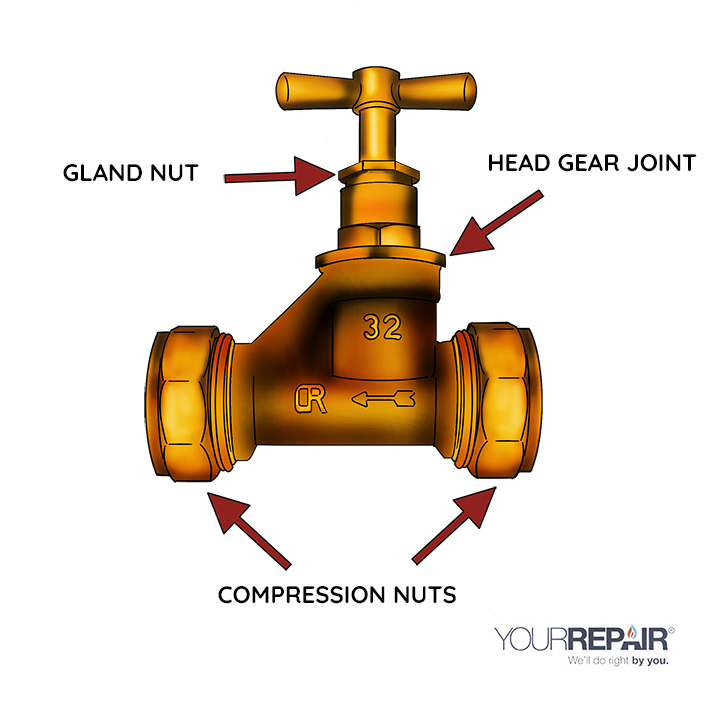
There are many different types of stopcocks but they will all have similar parts. In general, your stopcock will have:
- Compression nuts
- Gland nut
- Head gear joint
There are two compression nuts on either side of the stopcock which join the tap to the water pipes on either side. The gland nut sits below the stopcock and prevents water from flowing up inside the spindle. The head gear joint is the mechanism inside the stopcock which stops the flow of water.
If you can see water coming out of your stopcock, then the problem is either with the compression nuts or the gland nut. If you cannot see any water but the stopcock doesn’t stop the flow of water to your home when it is turned to the “off” position, then the problem is with the head gear joint. Read on to discover how to fix these components.
Leaking compression nut
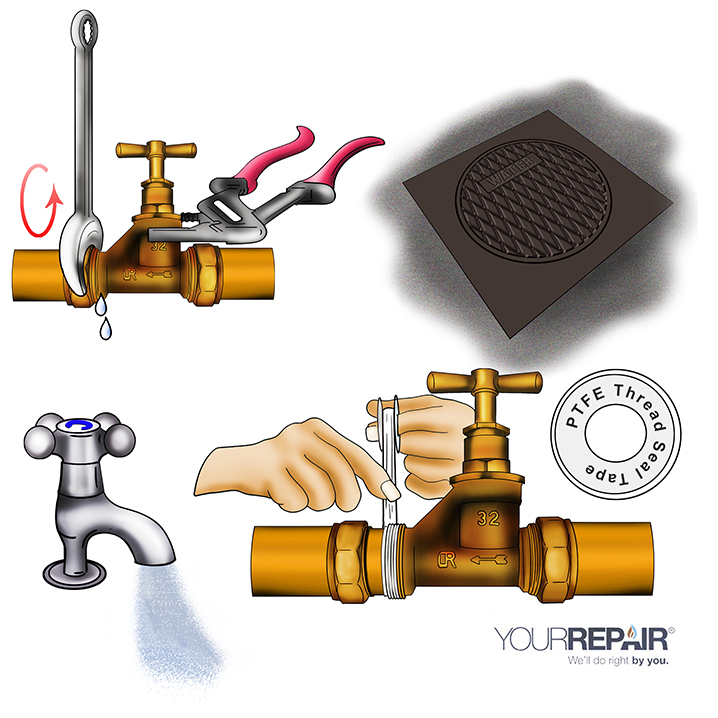
Difficulty: Easy
Tools required: Water pump pliers and a spanner
If you can see water leaking from the compression nuts on either side of the stopcock, you may just need to tighten them. To do this, grip the body of the stopcock with the pliers and use your spanner to turn the compression nut in an anticlockwise direction.
If this doesn’t stop the leak, you may need to create a seal with PTFE tape.
- Switch off the water supply to the stopcock by turning off the external stopcock. This may be located in a drain outside your home.
- Drain the water in the system by turning on a tap and waiting for the system to empty.
- Grip the stopcock with the pliers and use the spanner to loosen the compression nut. Next, wrap the thread with PFTE tape and then replace the nut.
Leaking gland nut
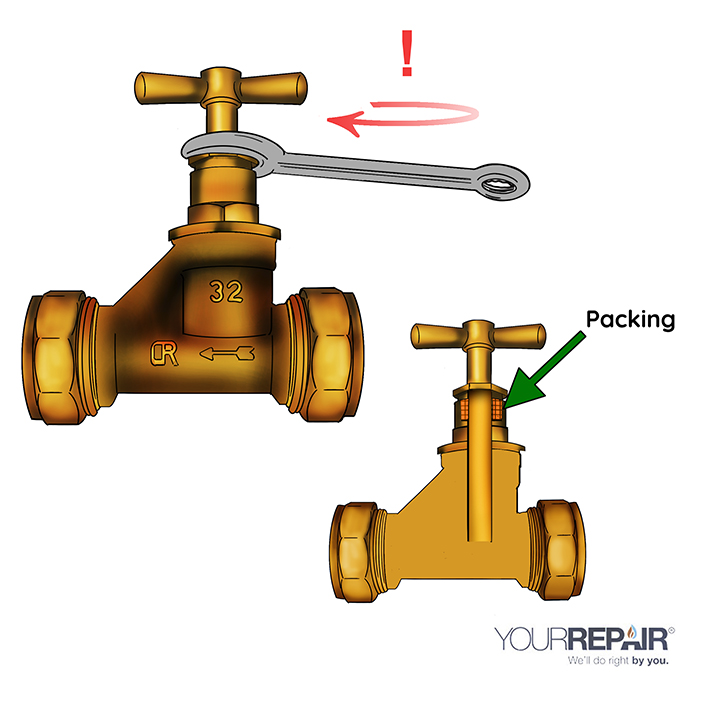
Difficulty: Easy
Tools required: Spanner
If the leak seems to be coming from the stopcock, you may have a leaking gland nut. Like the compression nut, this can easily be tightened. Use a spanner to tighten the gland nut but be careful not to tighten this too much as it could prevent you from turning the stopcock.
If this doesn’t fix the problem, you may need to replace the packing inside the gland nut which helps to prevent water flowing up the spindle.
Leaking gland nut: replace the packing
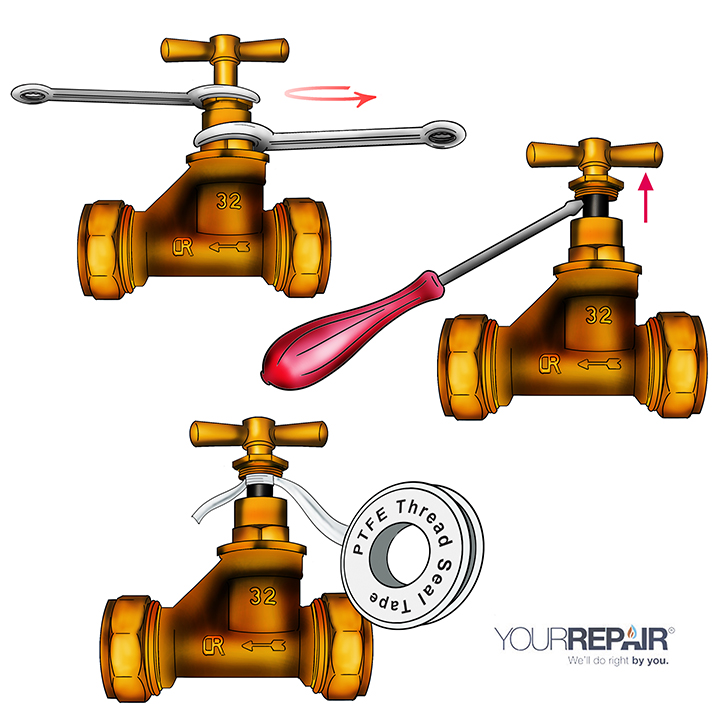
Difficulty: Moderate
Tools required: Spanners, screwdriver, PTFE tape/packing
Use one spanner to hold the large nut on the stopcock and the second spanner to loosen the gland nut. Slide the gland nut up the spindle using a screwdriver to manoeuvre it. Remove any old packing debris and then wrap the gland in PTFE tape or packing. Gently push this back into the gland and then tighten the gland nut.
Leaking head gear joint
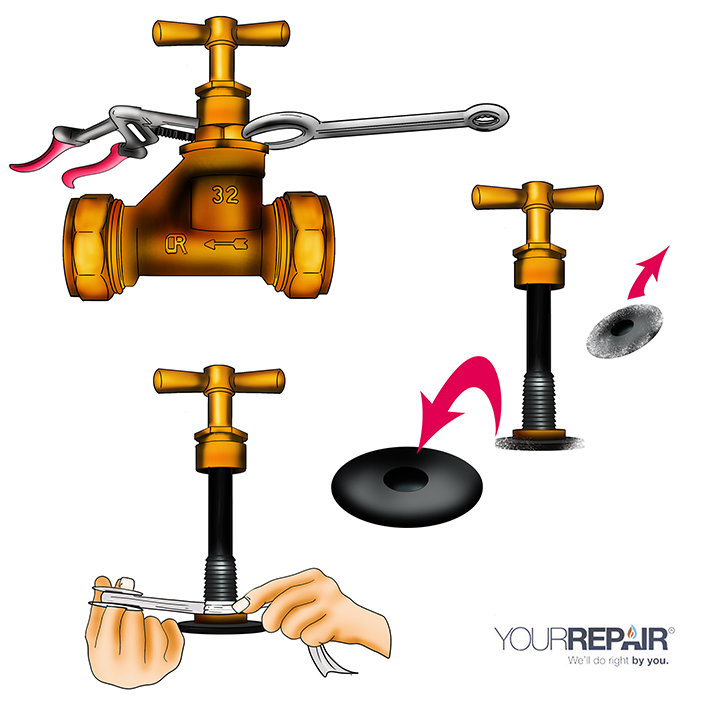
Difficulty: Advanced
Tools required: Water pump pliers, screwdriver, spanner, replacement washer, PTFE tape.
A leaking gear head joint is the result of a broken or eroded washer. The washer is located at the base of the spindle and it is the mechanism that stops the flow of water To replace this, you will need to isolate the water to your home and drain the pipes as outlined above.
- Loosen the large nut in the centre of the stopcock using your spanner and water pump pliers.
- Unscrew the tap and remove the entire stopcock and spindle.
- Remove the old washer and replace with a new one.
- Wrap PTFE tape around the bottom of the spindle, just above the washer.
- Replace the spindle and retighten the nut
If you are handy with a few tools and have access to some basic supplies, it can be quick and simple to repair a leaky stopcock. Leaks won’t go away on their own and could get worse over time.
Instead of ignoring the problem, it’s always best to take action to prevent any further water damage. It’s also important to have a functioning stopcock as this will be the quickest way to turn off the water supply to your home if you have a burst pipe or broken internal tap.
If you want complete protection from leaks and breakdowns, YourRepair could be the ideal choice. We offer a range of plans covering everything from your boiler to your electrics and everything in between. Get in touch today to find out more about home and boiler care plans.

